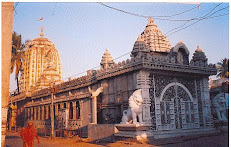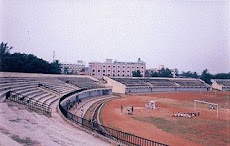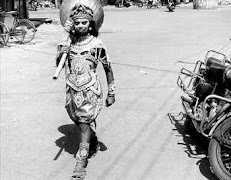Source: The New York Times
Operation Hidden Idol, as the investigation involving Mr. Kapoor was called, found that some of the items, such as a thousand-year-old bronze statue of the elephant-headed Ganesha, ended up at the world’s leading museums including the Metropolitan Museum of Art. Mr. Kapoor is facing trial in India.
But the hive-shaped Jagannath Temple in Puri, which forms part of the pilgrimage known as Char Dham — a four-part circuit traveled by Hindus to attain salvation — is far from an easy target.
A tight-lipped committee controls who can enter, where donations of money or jewelry are stored and how that information is disseminated to the public. The strict entry rules are designed to safeguard both the temple’s status as a sacred space and the treasures it contains.
In 1984, Indira Gandhi, then prime minister, was famously denied entry because her husband was a follower of Zoroastrianism, an ancient monotheistic religion. Even today, priests guard the entrance, turning away non-Hindus and some non-Indians from sects such as Hare Krishna, which is popular in the West.
An internal temple report from 1978 explained the policy — unusual for temples in India — with an analogy: “If the petals of a beautiful rose are torn and dissected for the purpose of investigating the ingredients of its color and smell, then the rose no longer remains a rose. It becomes a rubbish to be thrown away.”
In the 1930s, Mahatma Gandhi, the leader of India’s independence movement, refused to enter the temple in protest against its entry restrictions, according to Ramachandra Guha, an Indian historian. The temple eventually opened its doors to some Hindus who had been barred previously, including Dalits, a lower caste. But the insular mind-set remained.
This year, the temple made headlines when India’s Supreme Court suggested changing the rule preventing non-Hindus from entering. But many recommendations were abandoned.
“There’s a very long history of absolute reactionist bigotry,” Mr. Guha said of the temple’s exclusionary policies.
Reports of internal strife have also tarnished the temple’s reputation over past decades. Managers of the temple said in the 1978 report that “misappropriation, theft, lawlessness, harassment of pilgrims and exploitation had become the order of the day.”
That same year, to encourage transparency, an inventory was made of the vault. Temple officials reported finding a hoard of nearly 500 pounds of antique silver and gold ornamental jewelry designed to adorn statues of gods.
The vault was last opened in 1985, according to R. N. Mishra, a former temple administrator, who said that he and a group of officials had retrieved some gold for maintenance work and promptly returned the key to the district treasury.
After the furor this year over the loss of the key, temple caretakers said they had found a duplicate in the record room of the local magistrate’s office. Instead of quelling anger, the apparent discovery inspired more questions: When was the duplicate key made? Was it real? And where was the original?
Mr. Mishra called the loss of the original key a “gross negligence,” saying that a duplicate had not existed when he was administrator and that he was not aware of one ever having been made. “One key, one lock,” he said.
Dibyasingha Deb, a member of Puri’s royal family and the chairman of the temple’s managing committee, said that accusations of mismanagement were unfair. He shifted blame to outsiders trying to “make us a laughingstock.”
“When people write about these incidents, and they don’t have any faith in our religion, our culture, they would like to make it a very sarcastic sort of a way of projecting things,” he said in an interview.
But Pitambar Acharya, a lawyer in the Orissa High Court, the highest one in Odisha State, said he felt that temple caretakers were bluffing on what he called the “key loss hullabaloo.”
Last month, Mr. Acharya and other officials from the Bharatiya Janata Party, an opposition party in Odisha, lodged a complaint with the police against top state officials in charge of tracking temple valuables, citing their failure to inventory jewelry in the vault regularly and questioning whether a duplicate key even existed.
“There has been a clear breach of trust,” he said, relating to unanswered questions on the loss of the temple key and the supposed discovery of a duplicate.
Outside the temple, in a packed plaza where men hammered together wooden chariots to be used for a festival, anger was palpable among priests, shop owners and visitors.
“The government is hiding facts,” said Satyavaan Sahu, 31, a worker at a nearby trinket shop. “It is a disrespect. Everybody’s faith in the temple will go away.”
As the sun set in Puri, a throng of devotees climbed the temple’s broad, stone steps, where a man ushered them in by tapping their heads with two slender sticks, a transfer of the deity’s blessings.
Inside the temple, priests squatted to light oil lamps. Flanked by pillars covered in brightly colored motifs, thousands of men and women threw up their hands at the sight of a life-size statue of Lord Jagannath. Nearby, the entrance to the vault was shrouded in darkness behind metal bars.
Sonalata Das, 67, a bespectacled woman in a brown silk sari, lingered with clasped hands in front of a painting of Lord Jagannath. Asked about the missing keys, her face hardened.
“I prayed that God would completely finish off the person who has fooled around with the key for his wealth,” she said. “May he be destroyed.”
Follow Kai Schultz and Suhasini Raj on Twitter: @Kai_Schultz and @suhasiniraj.
To Read The Article Click here: https://www.nytimes.com/2018/07/14/world/asia/india-jagannath-temple-key-gold.html


















.jpg)


















































No comments:
Post a Comment